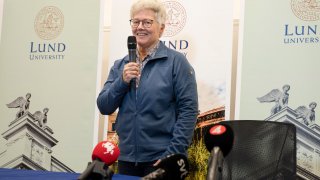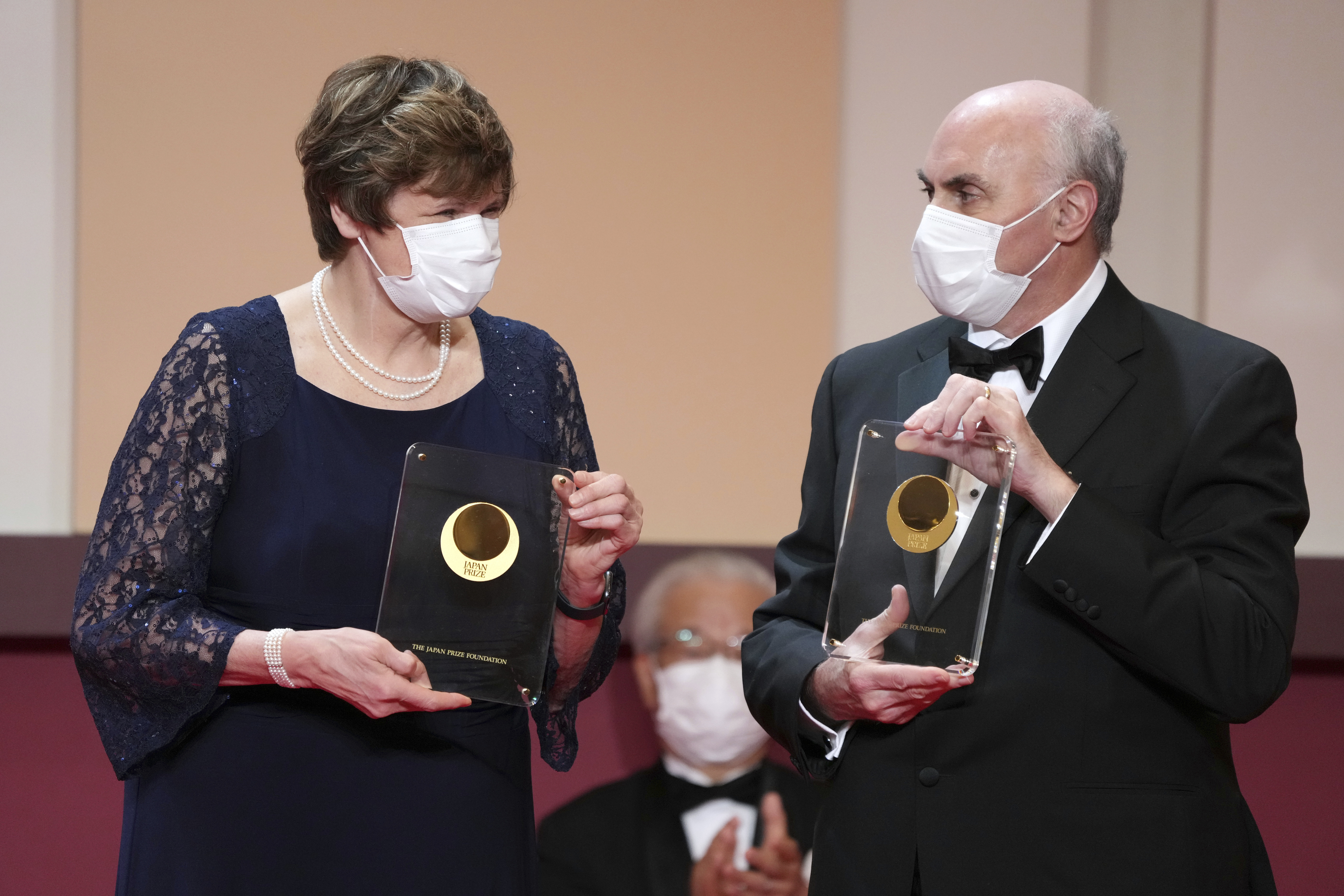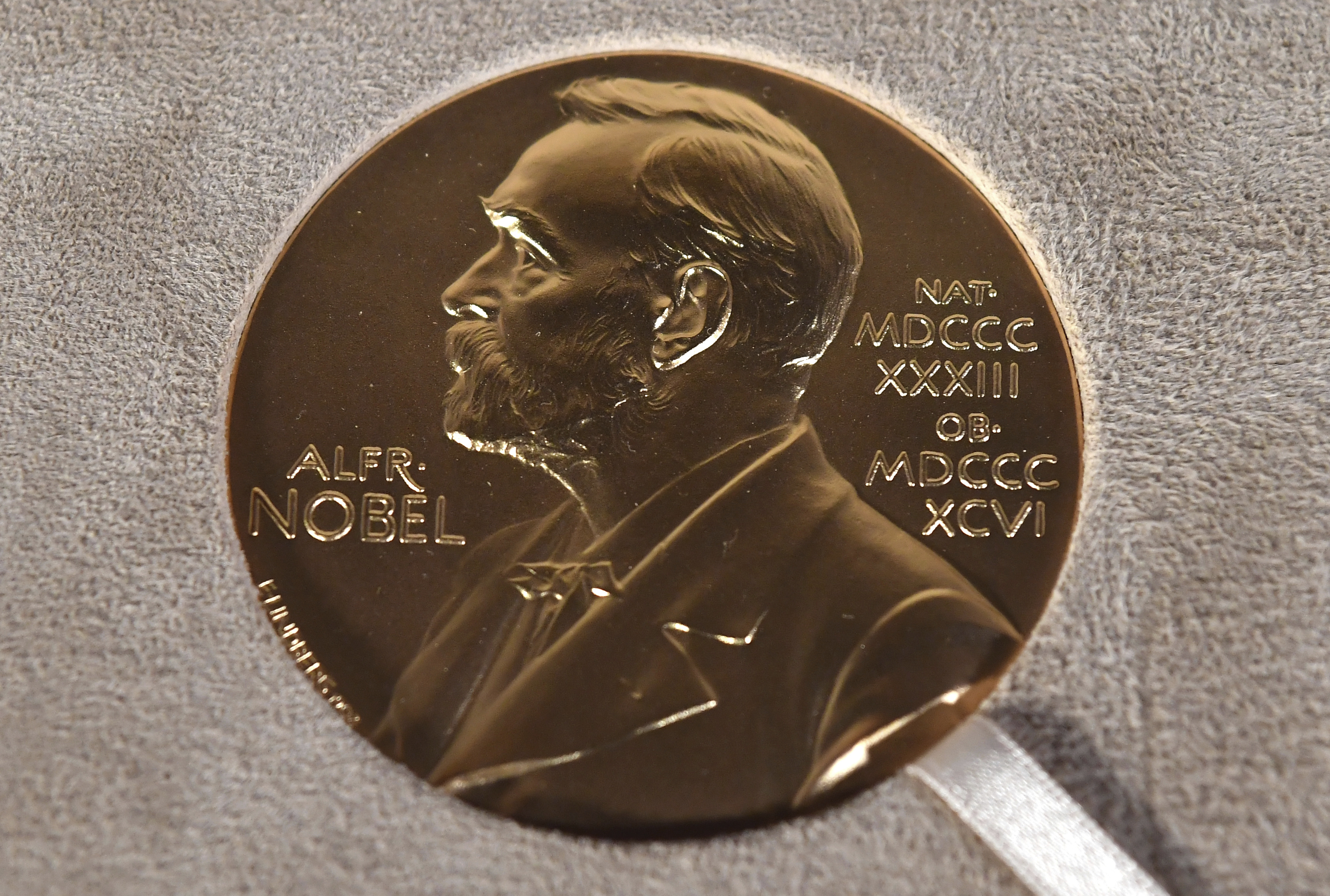
Three scientists won the Nobel Prize in physics on Tuesday for their work on how electrons move around the atom during the tiniest fractions of seconds, a field that could one day lead to better electronics or disease diagnoses.
The award went to Pierre Agostini, Ferenc Krausz and Anne L’Huillier for their study of the tiny part of each atom that races around the center and that is fundamental to virtually everything: chemistry, physics, our bodies and our gadgets.
Electrons move around so fast that they have been out of reach of human efforts to isolate them, but by looking at the tiniest fraction of a second possible — one quintillionth of a second known as an attosecond — scientists now have a “blurry” glimpse of them and that opens up whole new sciences, experts said.
“The electrons are very fast and the electrons are really the workforce in everywhere,” Nobel Committee member Mats Larsson said. “Once you can control and understand electrons you have taken a very big step forward.”
Get Boston local news, weather forecasts, lifestyle and entertainment stories to your inbox. Sign up for NBC Boston’s newsletters.
Their experiments “have given humanity new tools for exploring the world of electrons inside atoms and molecules,” according to the Royal Swedish Academy of Sciences, which announced the prize in Stockholm. They “have demonstrated a way to create extremely short pulses of light that can be used to measure the rapid processes in which electrons move or change energy.”
At the moment, this science is about understanding our universe, but the hope is that it will eventually have many practical applications.
In the news
L’Huillier, who is only the fifth woman to receive a Nobel in physics, said she was teaching when she got the call that she had won. She joked that it was hard to finish the lesson.
“This is the most prestigious and I am so happy to get this prize. It’s incredible," L’Huillier, of Lund University in Sweden, told the news conference announcing the prize. "As you know there are not so many women who got this prize so it’s very special.”
Swedish news agency TT reached Krausz, of the Max Planck Institute of Quantum Optics and Ludwig Maximilian University of Munich, by phone in Germany, where it is holiday.
“My colleagues are enjoying their day off, but I hope that we will meet tomorrow and then we will probably open a bottle of champagne,” he was quoted as saying.
Agostini is affiliated with Ohio State University.
The Nobel Prizes carry a cash award of 11 million Swedish kronor ($1 million). The money comes from a bequest left by the prize’s creator, Swedish inventor Alfred Nobel, who died in 1896.
Last year, three scientists jointly won the physics prize for proving that tiny particles could retain a connection with each other even when separated. The phenomenon was once doubted but is now being explored for potential real-world applications such as encrypting information.
The physics prize comes a day after Hungarian-American Katalin Karikó and American Drew Weissman won the Nobel Prize in medicine for discoveries that enabled the creation of mRNA vaccines against COVID-19.
Nobel announcements will continue with the chemistry prize on Wednesday and the literature prize on Thursday. The Nobel Peace Prize will be announced on Friday and the economics award on Oct. 9.
The laureates are invited to receive their awards at ceremonies on Dec. 10, the anniversary of Nobel’s death. The prestigious peace prize is handed out in Oslo, according to his wishes, while the other award ceremony is held in Stockholm.
___
Borenstein reported from Washington and Corder from The Hague, Netherlands.
___
Follow all AP stories about the Nobel Prizes at https://apnews.com/hub/nobel-prizes



